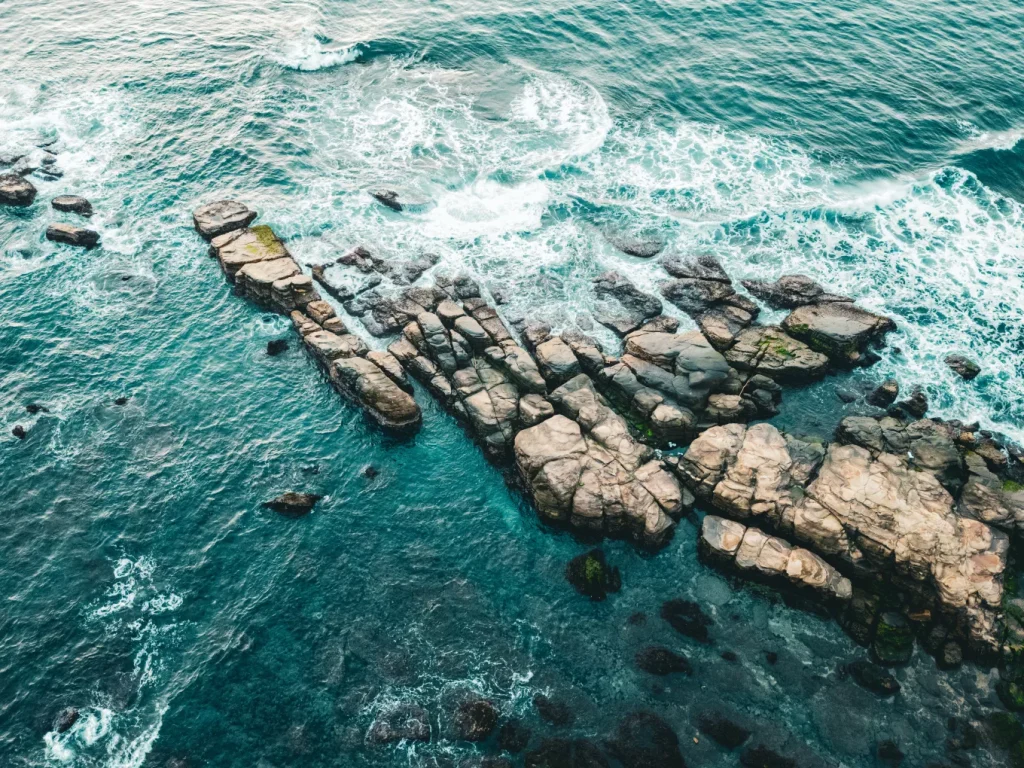This article first appeared on the NRDC website and is reprinted with permission
The Biden administration’s new plan includes a series of agency actions aimed at ocean-related climate solutions.
The Biden administration’s new Ocean Climate Action Plan (OCAP) looks to the ocean for climate solutions. Last Tuesday, the White House put out the first-ever Ocean Climate Action Plan—a series of agency actions aimed at ocean-related climate solutions—amid a slew of other conservation announcements. This is the first ocean-specific plan connected to climate from any administration.
The OCAP spans three broad themes: creating a carbon neutral future; accelerating nature-based solutions; and enhancing community resilience to climate change. The plan outlines more than 200 specific actions and timelines across the federal government. Ambitiously, many of these timelines are in the next six months. The plan’s release comes less than a year after the Biden administration initiated its development with an announcement at World Ocean Day 2022. Following the announcement, more than 80 businesses and conservation organizations, including NRDC, collaboratively developed their own blueprint with recommendations for what a federal ocean climate action plan should look like. The OCAP echoes many of the themes from the blueprint and sets a new vision for climate and ocean conservation work across agencies, including Bureau of Ocean Energy Management (BOEM) and National Oceanic and Atmospheric Administration (NOAA), with White House coordination and involvement.
The OCAP comes not a day too soon. The most recent Intergovernmental Panel on Climate Change report makes it abundantly clear that we are facing a climate emergency and need to take serious action—and fast. The climate crisis necessitates the use of all available means to avert catastrophe. While we must look at all the options available, we must do so in an environmentally and socially responsible manner. How the administration implements the bold vision set out in the plan will have profound impacts on the health of our ocean and the coastal communities that depend upon it. And, as I’ll return to later in more detail, this vision—and the plan to implement it—must include putting an end to new oil and gas development in the ocean.
Responsible use
- Offshore wind: A highlight of the plan is the administration’s commitment to expanding offshore wind “in an environmentally responsible manner that considers the needs of all users of those lands, coasts, and waters.” The offshore section points to multiple agencies involved, including NOAA, BOEM, and the U.S. Department of Energy (DOE). The document gets many things right: strong support for the science needed to improve knowledge of whether and how offshore wind development will impact wildlife and ecosystems; a call for increased coordination across all levels of government, tribal communities, and other partners; and nods to transmission buildout and workforce training. We need offshore wind to achieve the nation’s zero-carbon goals, and the administration’s work to get offshore wind built—and built responsibly—is critical to this new U.S. industry’s success.
- Green shipping: In order for the world to stay on track with the targets outlined in the Paris climate treaty, the shipping industry must decarbonize no later than mid-century. The OCAP leans into this challenge, identifying a suite of actions to achieve net-zero emissions from international shipping by 2050, including creating green shipping corridors to spur innovation. The plan also directs agencies to accelerate development and deployment of port and vessel technologies, and to “emphasize technologies with environmental co-benefits such as underwater noise reduction.” As my colleague has written here, the United States can and should lead on designing the next generation of vessels that are both quiet and carbon-free, ensuring not only progress on climate change but on another great challenge to ocean health— noise pollution from shipping.
- Ocean carbon dioxide removal (CDR): Given the climate crisis and need to mitigate carbon pollution however and as much as we can, ocean (marine) CDR warrants study and research. However, this enterprise—even its study—must be approached with caution. The OCAP agrees, emphasizing the need to “build sufficient knowledge about the efficacy and trade-offs of different methods of marine carbon dioxide removal.” The inclusion of ocean CDR in the plan reflects the increasing interest among policymakers, entrepreneurs, and others. But this is a nascent field that currently has limited regulatory guardrails. A large variety of ocean CDR strategies are being explored, and all present the risk of uncertain environmental and social impacts. We are reassured that the administration is clarifying the applicability of existing laws to these novel technologies. Yet the administration needs to do more. Development of a more holistic code of conduct—or regulatory framework—to ensure responsible research should be at the top of the list. Ultimately, ocean CDR must not be deployed unless comprehensive research demonstrates that these technologies are safe to human communities and the environment, and are capable of sequestering additional carbon over the long term in a manner that can be monitored and verified.
- Offshore carbon sequestration and storage: The OCAP makes a reference to the recent congressional mandate in the Bipartisan Infrastructure Act to develop a “marine geologic sequestration program” for the Outer Continental Shelf. We have an enormous caution here: such a program must prohibit any linkage to the practice of enhanced oil recovery, which uses captured carbon to pump extra oil out of depleted wells. By extending the lifetime and output of carbon-polluting wells, enhanced oil recovery undermines the purpose of capturing and storing carbon in the first place. Community input will be critical here—it is paramount that we not continue to burden communities like those in the Gulf who have been suffering for decades due to the pollution from fossil fuels and related industries. Indeed, carbon sequestration and storage in the Gulf threaten to increase these burdens by spurring further development of fossil fuel infrastructure.
While the ocean can help mitigate climate change, it is also directly harmed by its impacts. Importantly, the OCAP includes measures to help our ocean, fisheries, and communities adapt to climate change and arrest biodiversity loss.
Mitigation and adaption
- Climate-ready fisheries: With the science being clear about how significantly climate change is already impacting our fisheries, we need to ensure that our management can keep up with the many challenges resulting from these impacts, which include fish stocks shifting into cooler waters and more frequent extreme events like marine heat waves. The administration’s plan aims to “[p]rovide marine resource decision makers and other ocean users with the information they need to assess risks and take action to adapt to changing ocean conditions, including with implementation of the NOAA Climate, Ecosystems, and Fisheries Initiative (CEFI) decision support system.” Fully funding and implementing CEFI is one of the key tools we can use to make our fisheries climate ready. The investment in science must go hand in hand with updated management of our fisheries to truly be effective. The plan’s discussion of climate-ready fisheries gives a brief nod to the fight against illegal fishing. There should have been more: The United States has underutilized existing tools, such as sophisticated computing and expanded seafood traceability under the Seafood Import Monitoring Program, and it also needs to update the definition of illegal, unreported, and unregulated (IUU) fishing to include labor abuses. Going forward, the plan’s implementation should include stepped-up ambition on stemming IUU fishing as part of the fight for more climate-resilient fisheries. Together, actions such as the CEFI and helping to stem destructive illegal fishing globally are key steps for NOAA to give fishery managers and fishing communities actionable information and management tools they sorely need to ensure sustainable fisheries into the future.
- Marine Protected Areas: The science is clear that marine protected areas (MPAs) with high levels of protections (e.g., highly and fully protected areas) provide the greatest benefits for biodiversity and climate resilience. The OCA’s MPA section appropriately recognizes this as well. The administration, in line with the America the Beautiful vision, says it will seek to “create, strengthen, connect, and expand effective climate-adaptive Marine Protected Areas and other conserved areas.” This work includes MPAs that are effectively designed and implemented with both connectivity and tribal engagement (co-stewardship) aspects. Strong protected areas will be key in giving the ocean a chance to recover from decades of overexploitation and habitat destruction and to adapt to the impacts of climate change. As the plan proceeds, it will be important to make a clear distinction between MPAs and offshore wind areas. Offshore wind will be a significant and large industrial complex off our shores. Although they will help to reduce carbon emissions—which is obviously critically important in its own right—the wind farms do not aim to protect the biodiversity of our ocean and will, in fact, create additional stressors on some marine wildlife.
- Blue carbon: The administration will seek to “advance the protection, conservation, restoration, and sustainable management of coastal and marine habitats that naturally capture and store carbon.” The OCAP incorporates this investment in “blue carbon” into the America the Beautiful initiative. Both blue carbon research and conservation are emphasized. In this respect, while we agree that science is the foundation of successful conservation, it is actual protection and restoration that ultimately will make the difference, and they must be prioritized.
- Coastal climate resilience: The plan’s stated goals around coastal resilience note the need to connect across federal programs and work closely with communities on both technical assistance and federal investments. With the broad goal of preparing “coastal communities for the impacts of climate change through coastal resilience projects,” there is an emphasis in the plan on strategies that are adaptive and equitable. Environmental justice is a common thread and includes a commitment to the development of an ocean justice strategy for release later this year. The strategy will look at both barriers and opportunities to integrate environmental justice principles into the actions of the plan. Such an ocean justice strategy would be the first of its kind.
There is one glaring omission from this Ocean Climate Action Plan: offshore oil and gas drilling. For this ocean plan to reflect the climate strategy the planet needs, it must also end new offshore oil and gas drilling off our coasts.
It is clear we need to build responsible offshore wind, ensure our ocean ecosystems and the nation’s fisheries management systems are climate ready, and increase coastal community resilience. With this plan, the White House is making a coordinated effort to explore and then deploy our vast oceans as part of the solution to the climate crisis. This is an enormously welcome step.



